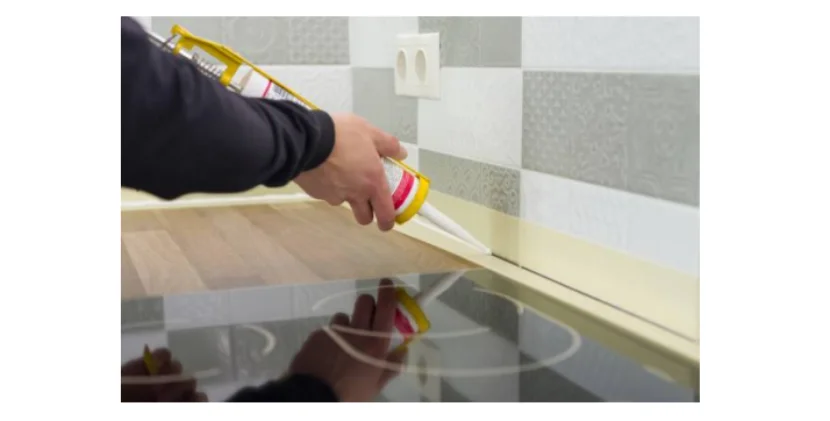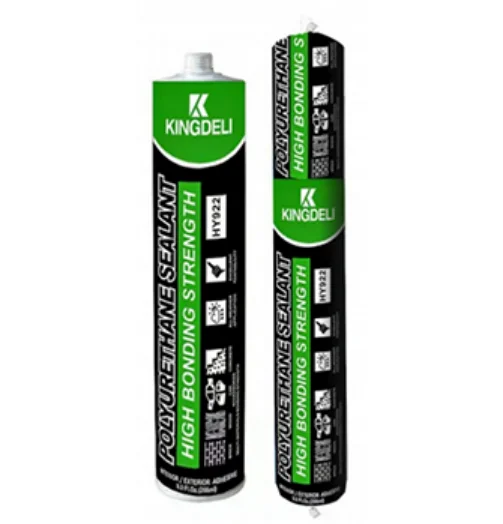What Is A Polyurethane Sealant Used For? Is Polyurethane Sealant Better Than Silicone?


Applications of Polyurethane Sealant
Common Uses of Polyurethane Caulk in Construction
Polyurethane caulk is super cool for building stuff. It’s tough as anything and sticks to all sorts of things like concrete, wood, and metal. People use it to plug up gaps and joints in buildings to keep out air and water. It’s bendy, so it moves when things get hot or cold, or when buildings wiggle a bit.
Take Foshan Kingdeli Viscose CO., LTD’s HY-925 Polyurethane Sealant for Construction, for example. It’s made for sealing big gaps in concrete buildings. It laughs off bad weather and sun rays. That makes it awesome for outdoor jobs.
Also, polyurethane caulk is great for floors. It fills spaces between tiles or wood planks to make floors look nice and last a long time. It grabs onto stuff like stone and brick super well, so it’s a go-to for building walls too.
The Role of the Best Polyurethane Sealant in Automotive Repairs
In cars, the best polyurethane sealant is a big deal for making and fixing things. It glues windshields and glass parts to car frames. Its sticky power keeps glass in place, even if the car shakes or gets banged up.
Foshan Kingdeli Viscose CO., LTD’s HY-924 Polyurethane Adhesive For Windshield is built for these jobs. It sticks tight and stays stretchy, so it holds up for ages.
Plus, polyurethane caulk seals seams and joints in car bodies to stop water leaks and cut down noise. It doesn’t mind oil, grease, or other car fluids, so it’s perfect for fixing under the car too.
Industrial Applications of Polyurethane Sealants
In factories, polyurethane caulk is a favorite ‘cause it’s strong and doesn’t get hurt by chemicals. It seals machine parts or keeps surfaces from rusting. It can handle tough stuff like acids or solvents, so it’s great for rough spots.
Foshan Kingdeli Viscose CO., LTD’s HY-922 Multiple Purpose Polyurethane Sealant. is a star for these jobs. It’s super tough and doesn’t wear out easy, making it great for heavy work.
Polyurethane caulk also helps put together things like fridges and washing machines. It sticks different materials, like plastic and metal, to keep products solid for a long time.

Comparing Polyurethane Sealant and Silicone Caulk
Key Differences Between Polyurethane Caulk and Silicone Caulk
Polyurethane caulk and silicone caulk are both awesome for sealing, but they’re different in how they work and what they’re made of.
Silicone caulk is great at handling really hot or cold weather. It stays bendy for ages but doesn’t always stick well to rough stuff like concrete or wood.
Another thing is drying time. Silicone caulk dries quicker, but it might smell a bit weird ‘cause it lets out acetic acid. Polyurethane caulk takes a little longer to set.
Advantages of Using the Best Polyurethane Sealant Over Silicone
One big win for the best polyurethane sealant is it’s tough as nails under pressure. Silicone caulk might tear if things move a lot, but polyurethane caulk stays strong even with lots of shaking or bending.
Also, polyurethane caulk is awesome at sticking to rough surfaces like stone or brick. That makes it perfect for building projects.
You can paint over polyurethane caulk easy. Silicone caulk is tough to paint, so polyurethane gives you more choices for making things look nice.
Situations Where Silicone Caulk Outperforms Polyurethane
Even with all its neat perks, polyurethane caulk isn’t always the best. Silicone caulk shines in some places:
Hot Spots: Silicone caulk can handle heat up to 400°F, so it’s great for sealing near ovens or furnaces.
Wet Places: Silicone caulk sets well even on damp surfaces.
Long-Lasting Jobs: In spots with little movement, like aquarium seals, silicone caulk can last longer ‘cause it’s super stable.
Benefits of Using Kingdeli’s Polyurethane Sealants
Features That Make Kingdeli’s Best Polyurethane Sealant Stand Out
Foshan Kingdeli Viscose CO., LTD makes killer polyurethane caulks for all sorts of jobs. One cool thing is how well they stick. They grab onto surfaces like concrete, wood, metal, and even rough stuff like stone or brick. That makes them super handy for building and factory work.
Take theHY-925 Polyurethane Sealant for Construction. It’s made for sealing big gaps in concrete buildings. It’s tough against weather and sun rays, so it’s great outside.The HY-927 High Strength Polyurethane Adhesive for Windshield is perfect for gluing windshields to car frames. It’s stretchy and lasts forever.
Environmental Advantages of Kingdeli’s Polyurethane Products
Kingdeli’s polyurethane caulks aren’t just great at their job—they’re nice to the planet too. They’re made to give off less yucky stuff, called VOCs, when you use them. That helps keep the air clean.
Also, these caulks last a super long time. That means you don’t need to fix or replace things as much. So, you use less stuff and make less trash.
Foshan Kingdeli Viscose CO., LTD cares about being green. Since kicking off in 1998, they’ve grown into a huge company with a 66,000-square-meter factory in Foshan, China. Their factories use fancy machines that follow strict eco-rules. That makes their products even better for the environment.
Choosing Between Polyurethane and Silicone for Specific Needs
Factors to Consider When Selecting Between Polyurethane Caulk and Silicone Caulk
Picking between polyurethane caulk and silicone caulk depends on a few things:
Surface Type: Polyurethane caulk sticks better to rough surfaces like concrete or wood. Silicone caulk is great for smooth surfaces but struggles with rough ones.
Durability: Polyurethane caulk is tougher when things move or shake a lot. It stays strong under pressure.
Drying Time: Silicone caulk dries faster, but it might smell ‘cause of acetic acid. Polyurethane caulk takes a bit longer.
Paint ability: You can paint over polyurethane caulk no problem. Silicone caulk is hard to paint, so it’s less flexible for looks.
Heat Resistance: Silicone caulk handles super high heat, up to 400°F, better than polyurethane caulk.
Wet Spots: Silicone caulk works well on damp surfaces, like in bathrooms or kitchens.
Recommendations for Different Application Scenarios
For building projects with rough stuff like stone or brick, Foshan Kingdeli’s HY-925 Polyurethane Sealant for Construction is a great pick. It sticks tight and handles sun rays well. For car fixes needing strong glass gluing, the HY-924 Polyurethane Adhesive For Windshield is awesome.
But silicone caulk is better for really hot spots or wet places. Like, sealing near furnaces or making watertight aquarium seals works better with silicone caulk’s special powers.
FAQs
What are the key benefits of using polyurethane sealants?
Polyurethane sealants provide exceptional adhesion across various surfaces, superior durability under mechanical stress, flexibility for accommodating material movement, and paintability after curing.
How do I choose between silicone caulk and polyurethane caulk?
Consider factors such as surface compatibility (porous vs non-porous), temperature resistance (silicone excels at high temperatures), curing time (silicone cures faster), and specific application needs like wet conditions or paintability.
Can I use polyurethane sealant outdoors?
Yes! Products like Foshan Kingdeli’sHY-922 Multiple Purpose Polyurethane Sealant are specifically designed for outdoor use with features like UV resistance and weatherproofing capabilities.
Are there environmentally friendly options among polyurethane products?
Foshan Kingdeli Viscose CO., LTD offers environmentally conscious options with low VOC emissions during application and sustainable manufacturing practices that comply with global environmental standards.
